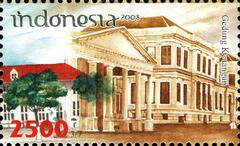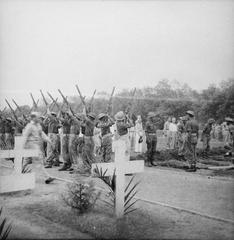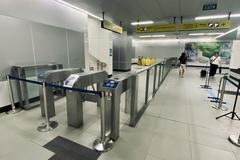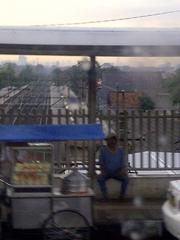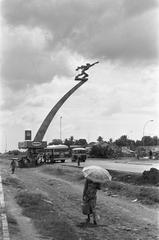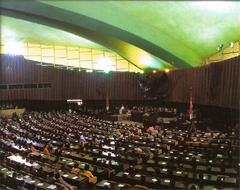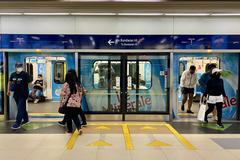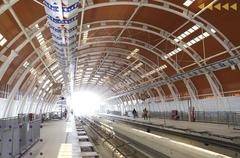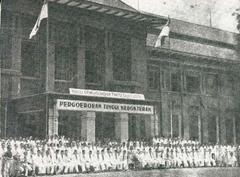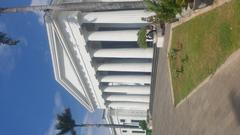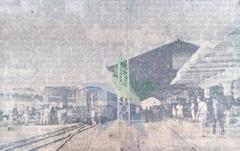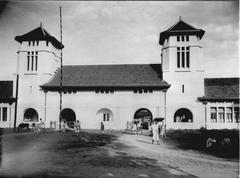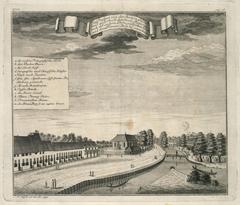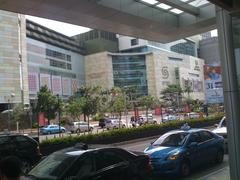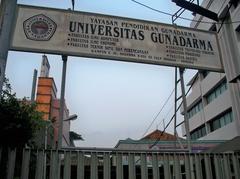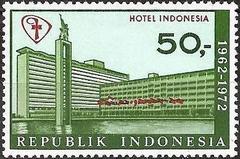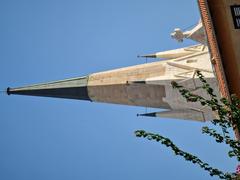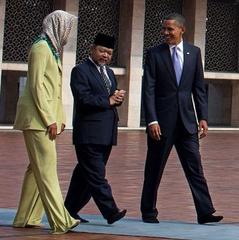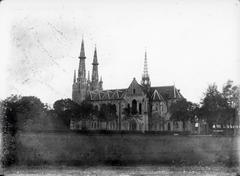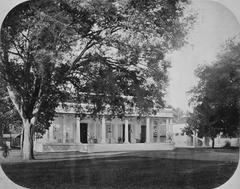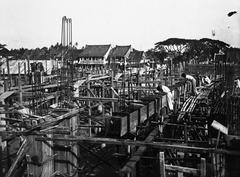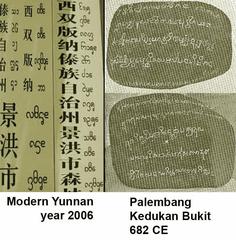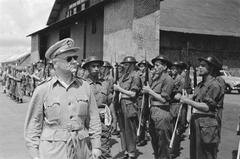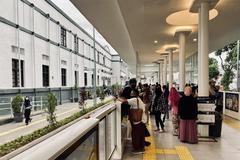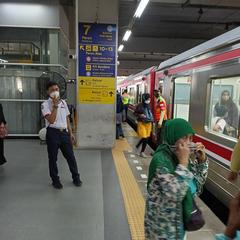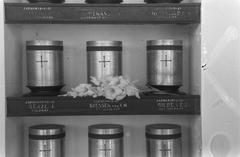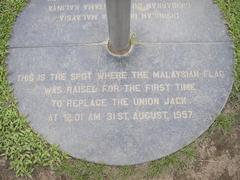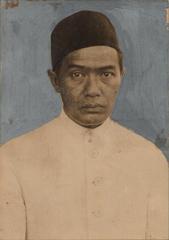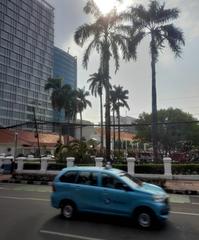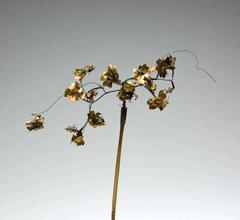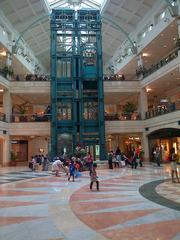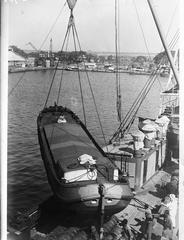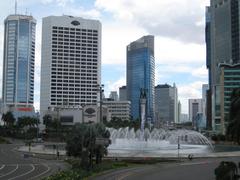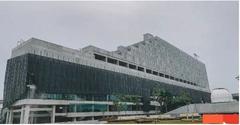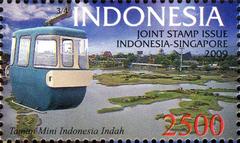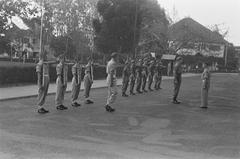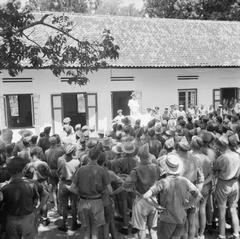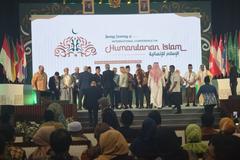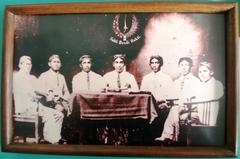
St. Paul’s Church Jakarta: Visiting Hours, Tickets, and Historical Significance
Date: 04/07/2025
Introduction
St. Paul’s Church Jakarta, locally known as Gereja Paulus or GPIB Paulus Jakarta, is a distinguished historical and architectural landmark in Indonesia’s capital. Established in 1936 during the Dutch colonial era, the church exemplifies the New Indies Style—an architectural approach that marries Dutch Rationalism with adaptations for Indonesia’s tropical climate. Visitors can marvel at its cross-shaped floor plan, steep roofs, generous skylights, and use of local materials, all while experiencing its enduring legacy as a center of faith and community in Jakarta (Wikipedia).
Besides its architectural allure, St. Paul’s Church is deeply woven into Jakarta’s religious and cultural fabric. It bears witness to the evolution of Catholicism in the city, standing near other prominent sites like the Jakarta Cathedral and Istiqlal Mosque—powerful symbols of Indonesia’s interfaith harmony and pluralism (ekaputrawisata.com; Center for Pluralism). With its central location, free entry, and diverse programs, the church welcomes travelers, history enthusiasts, and anyone keen to explore Jakarta’s pluralistic identity.
Table of Contents
- Introduction
- Historical Background
- Architectural Highlights
- Visiting St. Paul’s Church: Essential Information
- Nearby Attractions
- Frequently Asked Questions (FAQ)
- Summary & Travel Tips
- References
Historical Background
Early Catholic Presence in Batavia
Catholicism’s roots in Jakarta date to the 16th century with the arrival of Portuguese missionaries in what was then Batavia. Under Dutch rule in the 17th century, Protestantism was promoted, and Catholic practice was suppressed. Nevertheless, small Catholic communities persisted, often holding services in private homes (ekaputrawisata.com).
Growth of Catholic Churches
Religious tolerance, granted in 1807, allowed Catholics to worship openly. The Church of Our Lady of Assumption (now Jakarta Cathedral) was inaugurated in 1810, becoming the city’s principal Catholic church. St. Paul’s Church, although smaller and less documented, has served as an important parish for Jakarta’s Catholics, particularly in the Menteng area (wendyflor.com).
Architectural and Cultural Significance
St. Paul’s Church and other Catholic sites in Jakarta were more than places of worship—they were centers of education, charity, and social life. Their architecture reflects European influence, with Jakarta Cathedral showcasing neo-Gothic grandeur and St. Paul’s Church exemplifying Dutch Rationalist innovation adapted for the tropics (ekaputrawisata.com).
Modern Role and Legacy
After Indonesia’s independence, Catholic churches became symbols of religious freedom and interfaith cooperation, particularly given the proximity of St. Paul’s Church, Jakarta Cathedral, and Istiqlal Mosque. Today, St. Paul’s continues to serve an active congregation and hosts numerous community and interfaith events (Center for Pluralism).
Architectural Highlights
New Indies Style Features
Designed by architect Frans Ghijsels, St. Paul’s Church exhibits the New Indies Style, characterized by:
- Cross-shaped Floor Plan: Facilitates both symbolic and functional space use, allowing ample natural light (Wikipedia).
- Steep Roofs & Skylights: Steeply pitched roofs efficiently shed rainwater, while skylights on each facade enhance illumination and ventilation.
- Minimalist Facade: The clean, white exterior built with local brick and timber reflects simplicity, purity, and adaptability to the hot climate.
Interior Design and Symbolism
- Spacious Nave: High ceilings and an open layout create a sense of verticality and spiritual uplift.
- Natural Lighting & Acoustics: Skylights fill the space with warm light, and the architecture supports resonant acoustics ideal for choral music.
- Simple Furnishings: Wooden pews and minimal ornamentation reflect Reformed Protestant sensibilities and practical design for the tropical context (Wikipedia).
St. Paul’s Church stands in contrast to the ornate neo-Gothic Jakarta Cathedral, emphasizing functional beauty and climate adaptation (Indonesia Design).
Visiting St. Paul’s Church: Essential Information
Location and Access
St. Paul’s Church is centrally located in the Menteng district, easily reachable by public transportation, taxi, or ride-sharing services. Its proximity to key landmarks makes it an excellent base for exploring Jakarta’s heritage sites (Explore City Life; Lonely Planet).
Visiting Hours & Tickets
- Monday–Saturday: 8:00 AM – 5:00 PM
- Sunday: 7:00 AM – 12:00 PM (note: access may be limited during services)
- Admission: Free; donations appreciated for maintenance and community outreach.
- Guided Tours: Available on weekends and public holidays; inquire with the parish office or local tour agencies.
Accessibility
The church is wheelchair accessible, with ramps at entrances and accessible restrooms. Visitors with special needs should contact the parish in advance for additional assistance.
Photography and Tours
Photography is permitted except during services or restricted events. For a richer experience, guided tours—covering history, architecture, and community activities—can be arranged in advance.
Special Events & Community Activities
St. Paul’s Church regularly hosts interfaith dialogues, cultural performances, and community gatherings. It also collaborates with the nearby Sunda Kelapa Grand Mosque, sharing facilities and participating in joint humanitarian projects (Center for Pluralism). Check the church’s schedule or ask at the information desk about upcoming events.
Visitor Etiquette
- Dress modestly: Cover shoulders and knees.
- Maintain silence, especially during services.
- Ask permission before photographing people or ongoing ceremonies.
- Follow security instructions and respect posted guidelines.
Nearby Attractions
Make the most of your visit by exploring these nearby sites:
- Jakarta Cathedral: Renowned for its neo-Gothic architecture and rich history.
- Istiqlal Mosque: Southeast Asia’s largest mosque, directly across from the cathedral.
- National Museum of Indonesia: A short distance away, offering insights into the nation’s diverse heritage.
- Merdeka Square and Kota Tua: Explore Jakarta’s colonial core and vibrant city life (Explore City Life; Lonely Planet).
Frequently Asked Questions (FAQ)
Q: What are St. Paul’s Church Jakarta’s visiting hours?
A: Monday–Saturday, 8:00 AM–5:00 PM; Sunday, 7:00 AM–12:00 PM. Hours may vary on religious holidays.
Q: Is there an entrance fee?
A: No, entry is free. Donations are welcome.
Q: Are guided tours available?
A: Yes, on weekends and holidays. Contact the church or local tour operators to arrange a tour.
Q: Is the church wheelchair accessible?
A: Yes, with ramps and accessible restrooms.
Q: Can I take photos inside?
A: Yes, except during services and restricted events. Permission may be required for commercial photography.
Q: How do I get to St. Paul’s Church?
A: Use public transport, taxis, or ride-sharing apps. The church is centrally located in Menteng.
Summary & Travel Tips
St. Paul’s Church Jakarta stands as a testament to resilient faith, architectural ingenuity, and interfaith harmony. Its New Indies Style architecture is a highlight for design enthusiasts, while its role in Jakarta’s Catholic and community life enriches any visit. Plan to arrive early for a peaceful experience, respect the church’s customs, and take the opportunity to explore the surrounding historical sites for a comprehensive cultural journey.
- Arrive early for photography and quiet contemplation.
- Dress appropriately and maintain respectful behavior.
- Consider joining a guided tour for deeper insights.
- Consult the church for up-to-date visiting hours, especially during holidays or special events.
For ongoing updates, guided tours, and additional travel guidance, download the Audiala app and consult official resources to enhance your journey through Jakarta’s historical sites.
References
- Wikipedia
- ekaputrawisata.com
- Center for Pluralism
- Explore City Life
- Lonely Planet
- Indonesia Design
- wendyflor.com













